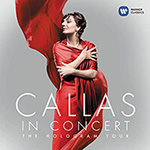Mids? Bien sur! Would the midband bring equally natural evenness to bear? After all, widebanders in general and horns in particular are often accused of response escapades. With such samples of the breed the Ichos N°4 MkII SE shares only the blueprint. Elia Duni's Lost Ships [ECM] with guitarist Rob Luft came across adroitly nuanced and resolved. With crystalline intonation that'd lay bare any deviation, the Swiss/Albanian songstress became posterchild for N°Four's tonal truthfulness. A moment of extreme intimacy occurs on "Hier Encore". My Austrian visitors nearly applied an acoustic zoom function where Equilibrium's Idea S8 had inserted more emotional distance. The closest competitors would probably be Tune Audio's Marvel. Their back-loaded horn also exhibited an especially realistic handling of the human voice. That Greek speaker too had mastered the emotional drama which soprano Diana Damrau unleashes as Konstanze in Mozart's Entführung aus dem Serail. In the end I thought that the Ichos went even deeper into greater expressiveness. Here I'll remind you that four years ago, N°Four's bigger stablemate had a few spots of trouble with classically trained vocals. With its hotter tuning the spark of inspiration had simply refused to jump on favorite Maria Callas recordings.

 Now that was yesterday's snow when the N°Four ran victory laps around Callas reissues like Pure Maria Callas or Callas in Concert – The Hologram Tour. This Primadonna Assoluta climbed her highest register effortlessly without incurring any intrusion of bite or harshness. Clear and articulate no doubt, shrillness just didn't factor which would convince even less committed appreciators of Italian bel canto.
Now that was yesterday's snow when the N°Four ran victory laps around Callas reissues like Pure Maria Callas or Callas in Concert – The Hologram Tour. This Primadonna Assoluta climbed her highest register effortlessly without incurring any intrusion of bite or harshness. Clear and articulate no doubt, shrillness just didn't factor which would convince even less committed appreciators of Italian bel canto.
Just so, Ichos' compression driver holds no workshops in wet snogging. It spells out the truth with magnification powers, energy and clarity clearly beyond the silky shadings of textile domes. On good to excellent productions, this dosage of set-free treble energies felt spot on. Just don't expect mercy where mastering decisions opted for undue freshness. Such errors translate uncut. I simply prefer the unvarnished truth over editorialized omissions. Some could fancy signal-path valves but the Ichos can do without 'em. My combo of passive Silvercore Preamp 324 and bipolar output transistors in the darTZeel NHB-108 worked splendidly and sorted out the metallic glitter halo following a pert cymbal strike with full control, clarity and extended trails. Served!
The attendant detail density required no hiding from typical studio monitors groomed to cut to the bone of any inspected track. I'd rate the optical lens quality of Ichos close to a Genelec 8361A or Lyravox Karlsson which ultimately probably have that discipline's edge. But pure resolution isn't the N°Four's sole raison d'être. What matters just as much is connecting us to the musical whole. Here it was just as easy to follow the individual solo voices of Moscow's New Radio Choir under Elena Rastorova [Russian Acapella Choral Music, Three Choruses From Tsar Feodor Ioannovich – Prayer] as it was a moment later to admire the blending into seamless harmonies which is so typical of high Russian choral art. It showed the coin's other side just as convincingly. Once immersed in stacked chordal complexity, it was apparent that these massed forces separate into registers on continuously ascending risers one row behind the other. Then there was hall ambiance of echo and reverb, intrinsic part and parcel of all big choir performances. That portrayed obvious scale and height of the chosen venue. Likely a church, its physical dimensions paraded as cavernous. Until then I'd not fully appreciated that advanced soundstaging is a solid part of Ichos' profile.
Now a cross-check with Sabine Meyer's Schubert Octet confirmed not just squeaky-clean separation—not easiest to do with eight players—but a realistically airy convincingly deep depiction of audible space which well exceeded the width of my speaker setup.

Hypnotic appeal of a very different kind uncorked with Amid, a four-number worldmusic album from Iran's Hesam Inanlou. Complex polyrhythms, unexpected time changes and vertigo-inducing percussive stunts highlight the finger-struck tombak frame drum ably assisted by the piano's deliberately percussive play. The country's signature kemanche then nearly shocked with the artist's intensely raspy oscillations and violent string snaps. The N°Four had me in the lute's microphone position at virtual nose's length. Little wonder when hornloaded widebanders excel at microdynamic jump factor. I heard real resolution of multi-layered dynamic shadings so suggestive of a live performance.
Such lightning-fast responsiveness recalled long-gone costly Lowthers fitted to complex Audiovector Symphonic enclosures. Those had responded equally accelerated to recorded dynamic flickers. Tonally they'd simply been sloppier. True SPL stability had eluded them, too. Not the Ichos which despite coming on song very early, seemed to challenge me to keep goosing the volume.
As powered by the above darTZeel, the complex dance-floor fare of the Jazzrausch Bigband with the title track of Dancing Wittgenstein swung hard and indeed at party-approved sound pressures. Forget having any kind of simultaneous civilized conversation.